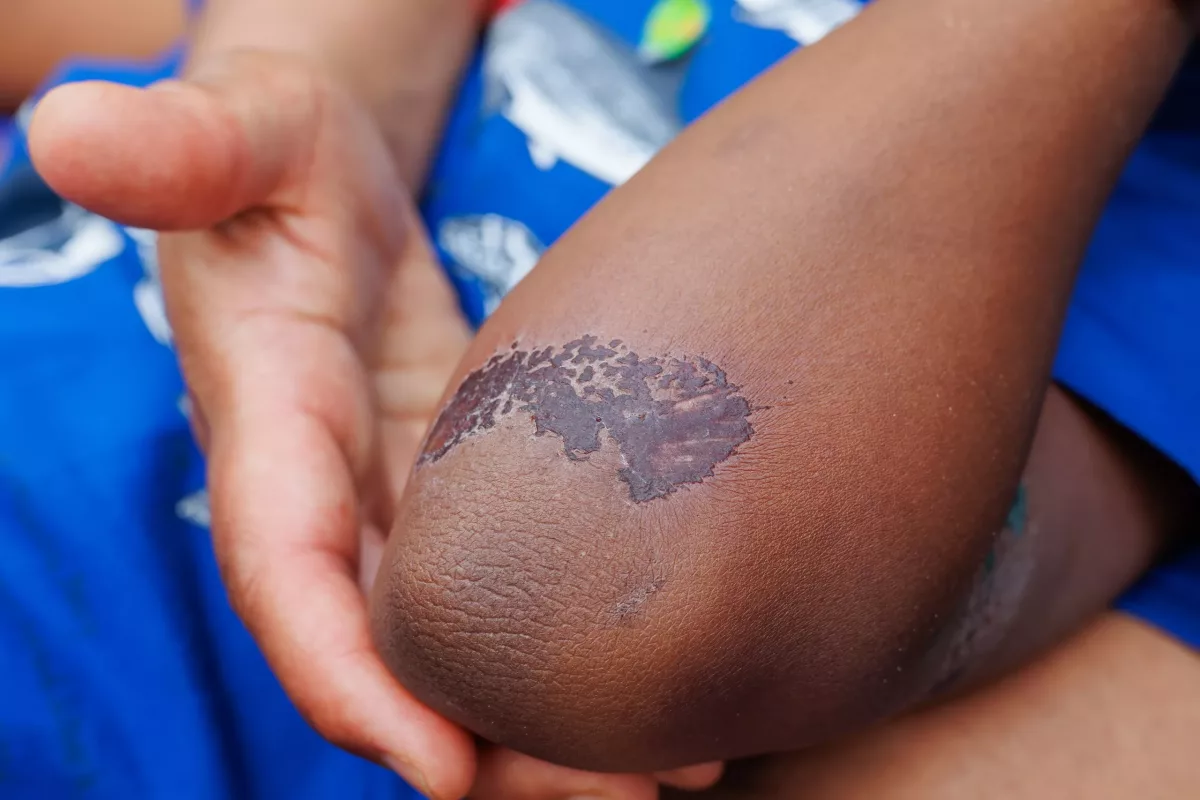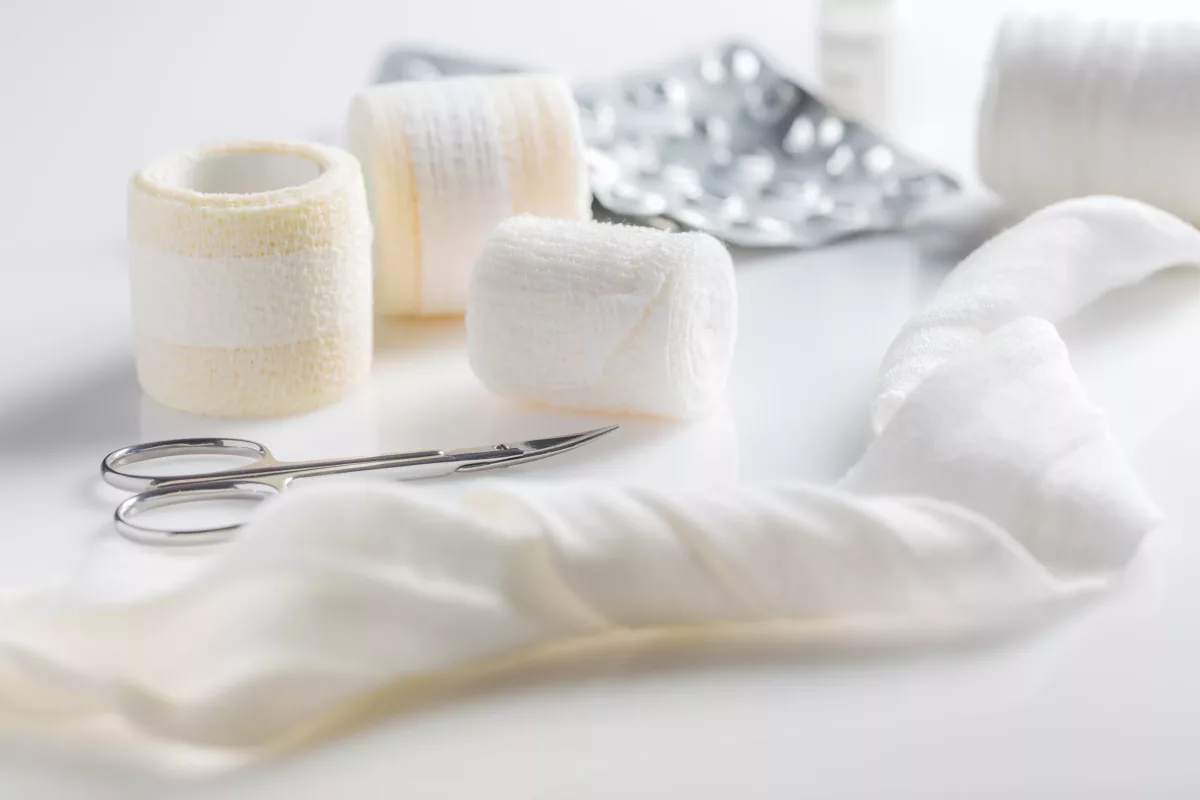Certain injuries to the skin and tissue below caused by prolonged pressure on them are called pressure ulcers. In most cases, this condition appears on the skin that covers bony areas of the body. These include ankles, hips, heels, and tailbone. Sometimes, pressure ulcers are called bed sores, pressure injuries, or decubitus ulcers.
Usually, those who develop bedsores also have other health conditions that make them stay in the wrong position or spend most of their time in a bed or chair. Pressure sores often appear within hours or days.
Commonly, most people recover completely with treatment. You can also discuss with your healthcare professional about ways to prevent bedsores.
Symptoms
Check below some symptoms that people with pressure ulcers experience:
- Pus-like draining
- Sore areas
- Swelling
- Skin color or texture changes
Generally, pressure ulcers fall into several stages according to their depth, severity, and other features. The damage to the skin ranges from inflamed, unbroken skin to deep injury that involves muscles or even bones.
Check below the most common sites of bedsores:
- Buttocks
- Tailbone
- Shoulder blades and spine
- Back of arms and legs
- Sides or back of the head
- Hip and lower back
- Ankles, heels, and skin behind the knees
It is advised to contact your doctor if you notice that the pressure area does not improve within 2 days. Immediately visit a doctor if you notice infection symptoms.
Causes
This condition occurs because pressure against the skin limits blood flow to the skin. People with limited movement are more likely to develop this condition. Check below the primary things that cause pressure ulcers:
- Pressure – Prolonged pressure on any part of the body leads to reduced blood flow to that tissue. However, blood delivers oxygen and other vital nutrients to these tissues. Without them, the skin and other body structures are damaged and, over time, may die. Reduced or lack of movement usually makes the skin more likely to the damaged.
- Friction – It happens when the skin rubs against clothing or bedding. As a result, the skin becomes fragile and more prone to injuries.
- Shear – This occurs when two surfaces move in opposite directions.
Risk Factors
The risk of developing pressure ulcers increases if you have a hard time moving or cannot change position easily. Check below for other factors that may also elevate your risk of developing bedsores:
- Immobility – It often occurs due to certain diseases, spinal cord injury, and others.
- Incontinence – The skin may become vulnerable with prolonged exposure to urine and stool.
- Lack of sensory perception – There are some neurological disorders or spinal cord injuries that make you lose sensation. In such cases, you cannot feel pain or discomfort, which makes you more likely to develop bedsores.
- Poor nutrition and dehydration – If you are not getting enough calories, protein, vitamins, fluids, and minerals each day, your skin may become fragile.
- Certain health conditions that affect blood flow – Some people with conditions that affect blood flow are at higher risk of tissue damage (including pressure ulcers). These include vascular disease, diabetes, and others.
- Age – People over 70 years old are more likely to experience pressure ulcers.
What Happens if Pressure Ulcers are Left Untreated?
Check below some complications that may occur in people who leave bedsores untreated:
- Cellulitis – This is a skin and connective tissue infection. People with this condition often experience swelling and warmth in the affected area. However, those who experience nerve damage may not experience pain in the cellulitis area.
- Joint and bone infections – In some cases, an infection may reach bones and joints. While infections of the joint (such as septic arthritis) can cause damage to the cartilage and nearby tissue, bone infections (also called osteomyelitis) may cause movement problems.
- Cancer – There is a type of pressure ulcer that may turn into a type of squamous cell carcinoma. It is called a Marjolin ulcer.
- Sepsis – This complication occurs quite rarely. However, sepsis is a life-threatening infection that requires immediate treatment. Otherwise, it may lead to death.
How to Prevent Pressure Ulcers?
Check below some tips that could help prevent bedsores:
- Take care of your skin
- Regularly change the position
- Avoid stress to the skin
- Quit smoking (if you face problems with smoking cessation, discuss it with your healthcare professional)
- Regularly perform physical exercises
- Manage stress and chronic health conditions (such as diabetes)
Diagnosis
In most cases, a physical examination is enough to diagnose a bedsore. Once you are diagnosed, doctors will assign a stage to the wound as it helps make the best treatment plan for you. Sometimes, physicians may perform blood tests to check your overall health.
Treatment
Generally, treatment for pressure ulcers involves reducing pressure on the affected area of the skin, dietary changes, and medicines to prevent infections and lessen pain.
Pressure Reduction
Check below some ways that help reduce pressure and friction that cause the pressure ulcer:
- Position changes – It is recommended to change the position regularly if you develop a bedsore.
- Supportive surfaces – You can use a mattress, bed, or special cushions that help you lie or sit in a way to protect fragile or vulnerable skin.
Wound Care
It is very important to clean wounds, especially open sores, because it helps prevent infections. Check below some options:
- Clean – In most cases, doctors recommend a gentle cleanser if the skin is unbroken. However, if you have an open sore, you should use water or saline (also known as saltwater solution).
- Bandages – These bandages help improve wound healing and maintain the wound moist. Therefore, it makes a protective barrier against infections. You can choose films, gauzes, gels, foams, and treated coverings. Sometimes, people need a combination of bandages.
In general, a sore needs to be free from dead, damaged, or infected tissue to heal properly. Therefore, physicians may remove damaged tissue (also called debridement).
Other Treatments
- Nonprescription pain relievers – If you experience mild to moderate pain, doctors may recommend over-the-counter pain relievers such as nonsteroidal anti-inflammatory drugs (NSAIDs). For example, Naproxen sodium, Ibuprofen, Acetaminophen, and others.
- Dietary changes – Balanced nutrition may improve wound healing.
Surgery
When previous treatments do not work, physicians may recommend surgery to repair the affected muscles, skin, and other nearby tissue. This procedure is also known as flap surgery.
Frequently Asked Questions
What causes pressure ulcers?
These skin sores are also known as bedsores or pressure sores. The primary cause of these ulcers is continuous pressure on the skin that limits blood flow to those parts of the body. It often occurs in people that most of their time is spent in a chair or lying in bed.
How do you get rid of pressure ulcers?
Healthcare professionals may flush the wound with water or cut damaged tissue to allow the sore to heal properly. They may also check the skin for dead and infected tissue because it affects the healing process.
Is Vaseline good for bed sores?
This medicine can be used as a protection for the skin around bedsores. It helps prevent dryness but cannot heal bedsores. If you have additional questions, ask your healthcare provider.




